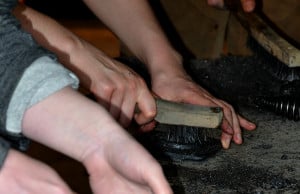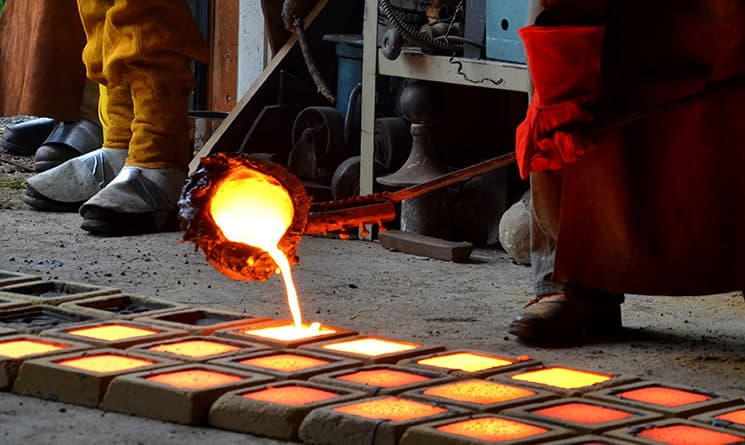The thrill of working with glowing molten iron lasts as long the sculptures made from it.
It’s been more than 10 years since Lauren and Josh Dow helped found the Iron Guild while they were still students at the Massachusetts College of Art, and they’re still captivated by molten iron. “It doesn’t really fade,” said Lauren.
She said working with the natural elements of metal and fire, and pouring red-hot iron into a cast that will bend it to your will, is like wielding a magic power.
“There’s something surreal about it,” she added.
Since they recycle scrap iron, every drop isn’t as precious as when using more expensive metals, like bronze. They can feel free to be creative. In addition to making sculpture, the Iron Guild has toured and performed with molten iron, throwing it in the air and against walls, as it sparks and glows.
The Dows also established Green Foundry on the grounds of Sanctuary Arts in Eliot, Maine, where their shop is surrounded by sculpture gardens. For seven years, they’ve hosted an iron pour benefit in conjunction with an open house at the gardens and art school, which is led by sculptor Christopher Gowell.
This year, the funds are being raised for Lauren’s mom, Donna Holmgren, who has pancreatic cancer. Visitors can design their own iron tile to take home for $15. The money will help cover Holmgren’s out-of-pocket medical expenses.
The open house and iron pour at Sanctuary Arts is on Saturday, July 25, from 11 a.m. to 4 p.m. All ages are invited to tour the sculpture gardens and listen to live music, while waiting for their own artwork to cool. It’s located at 117 Bolt Hill Road in Eliot.
How to make an iron tile
With Green Foundry
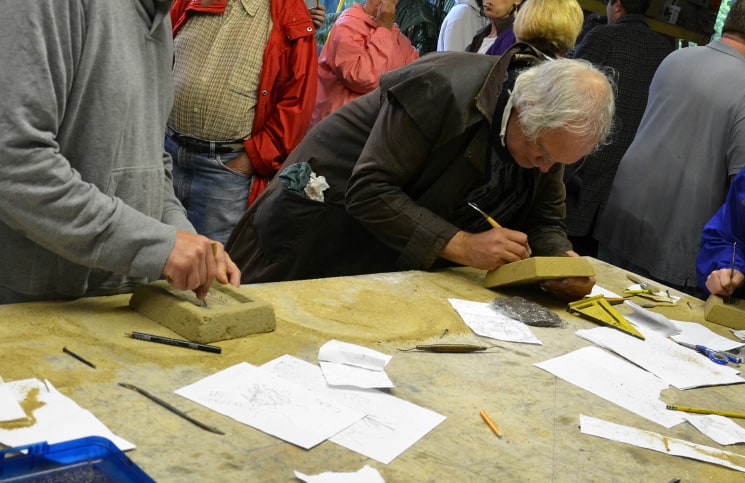
Step 1: Purchase a four-by-four-inch sand mold, and carve a unique design into it with metal tools. A pencil can be used to draw details. The iron will fill in the design, creating a relief, or the raised part of the tile. Molds will be available until 2:30 p.m. on Saturday.
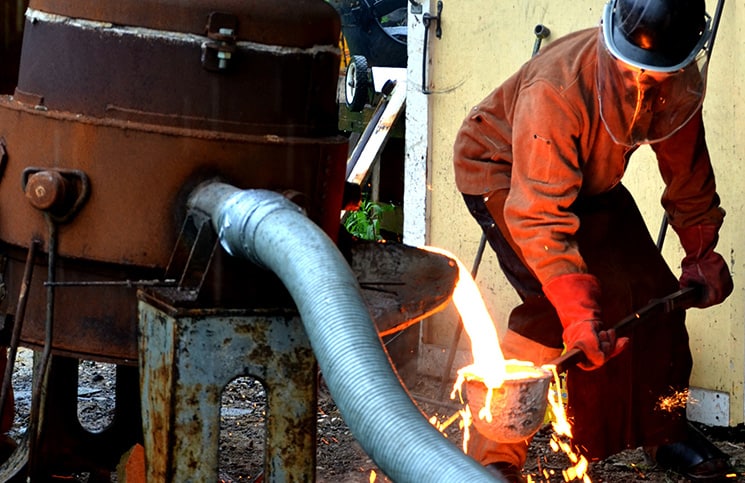
Step 2: Behind a safety line and protected in leather gear, several Green Foundry workers preheat the cupola furnace with propane and coke, a type of coal that’s been refined to pure carbon and burns up to 3,000 degrees. When ready, the team turns off the propane and blows in air to keep the furnace hot. The scrap metal, such as old radiators, has been broken into smaller pieces to melt again and reshape. Layers of coke and metal are piled up until molten iron collects at the bottom of the furnace.
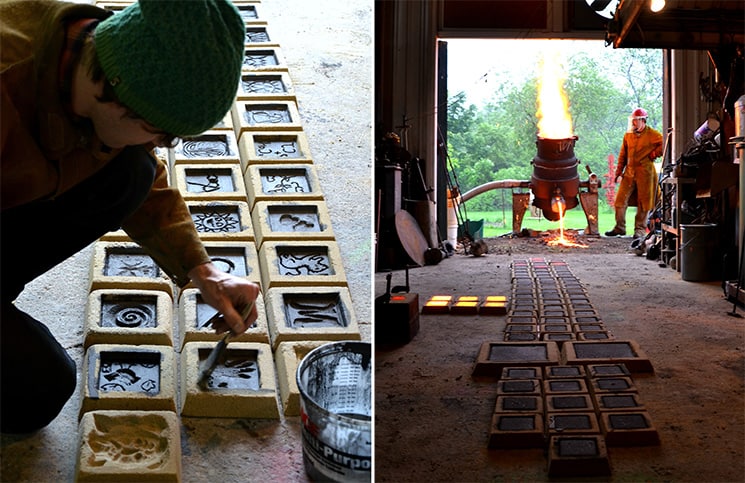
Step 3: A graphite solution is brushed onto the carved sand molds to make it easier to release the iron once it’s cast.
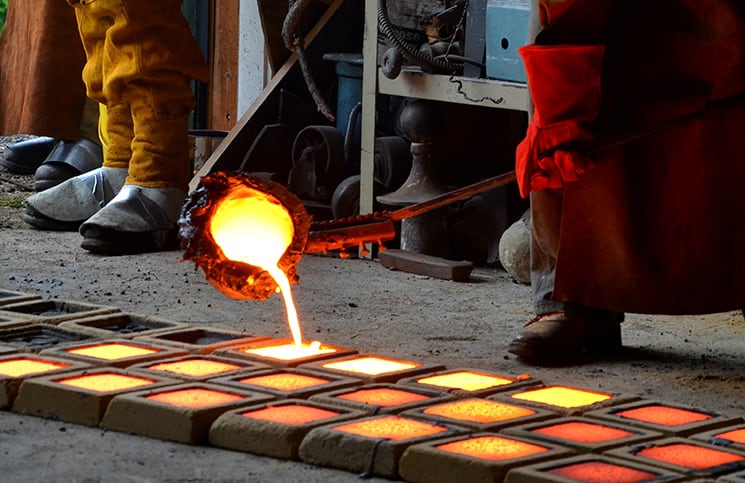
Step 4: The glowing molten iron is poured into the sand molds with a large ladle. It sparks when it makes contact with the air outside.
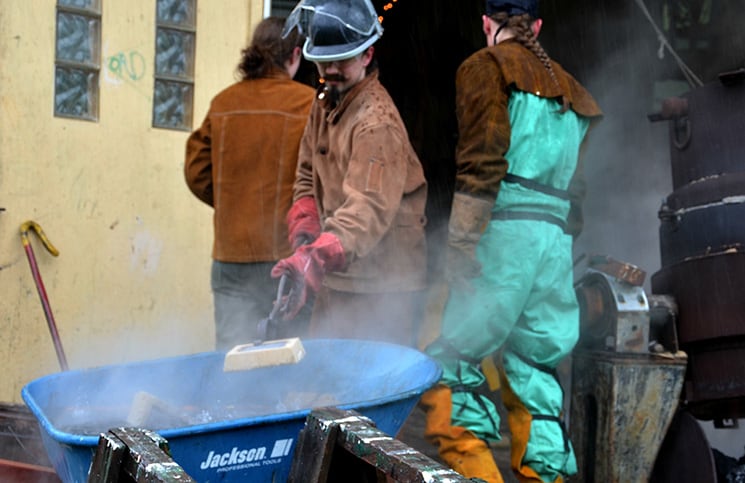
Step 5: After about 45 minutes, the iron tiles are released from the molds, dropped into water to cool down, then scrubbed clean, and distributed to take home.
